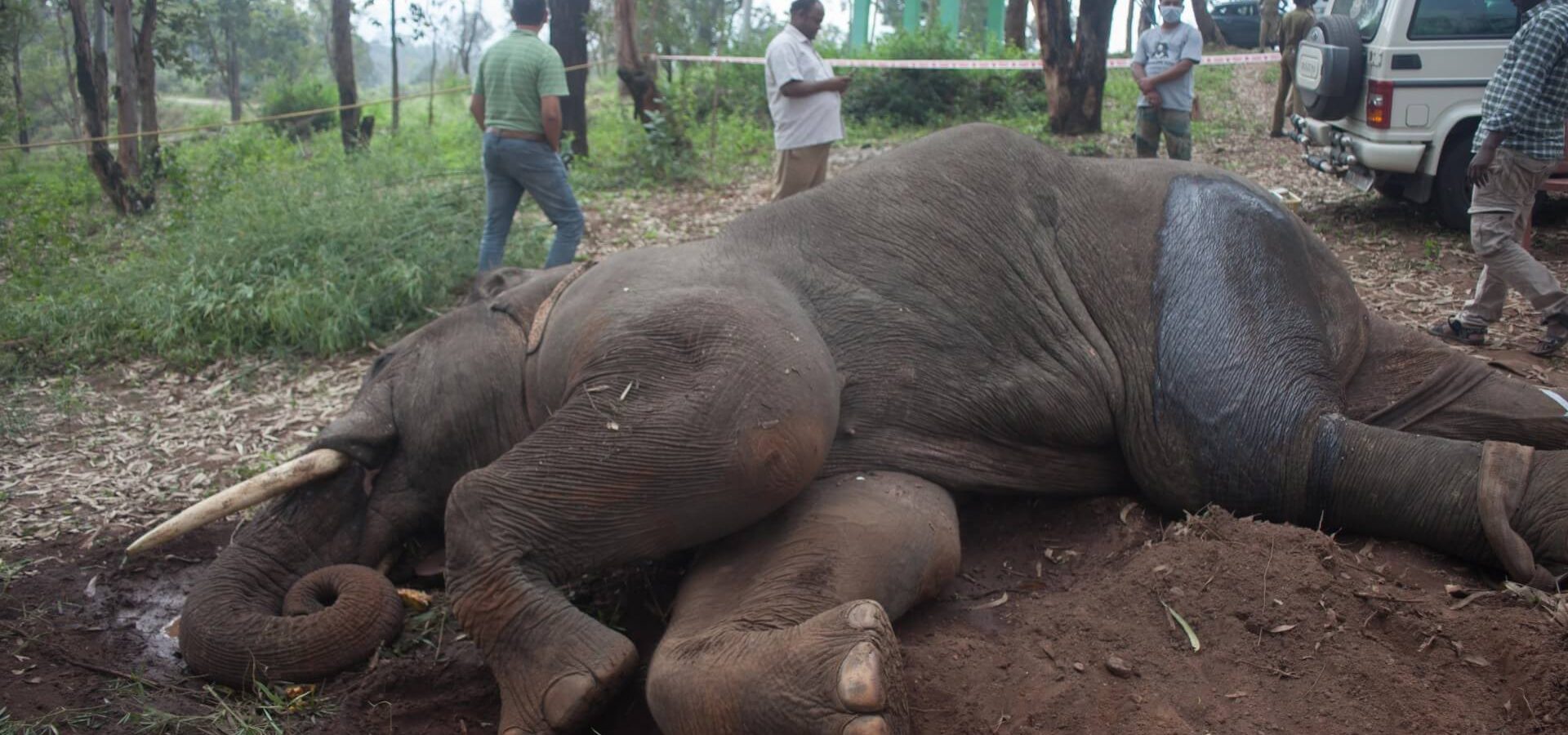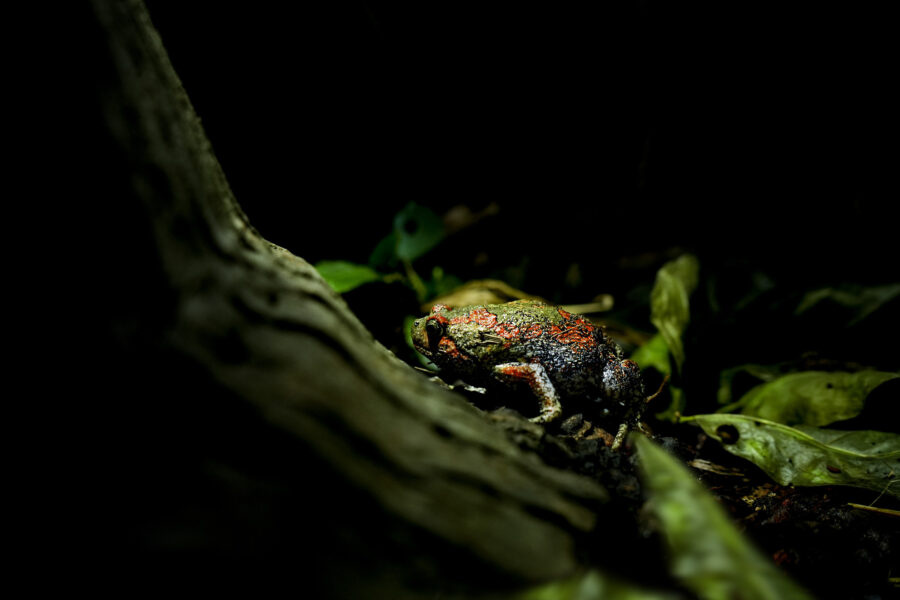The Hosur-Krishnagiri highway in Tamil Nadu has been used by wild elephants as a part of their traditional migratory route, for decades. The steady expansion of highways has managed to cut right through the forest patches and intrude these migratory routes, thus leading to a rise in accidents with speeding vehicles. In one such tragic incident, a 40 – year old tusker elephant suffered a serious fracture in the hind limb when he collided with a container truck on this highway in the early hours of the morning.
The elephant was knocked down by the impact of the collision and he tumbled into a ditch by the roadside, while the front-side of the truck was completely crushed and the driver too sustained serious injuries. He was later booked under various sections of the Wildlife Protection Act, 1972. The Tamil Nadu Forest Department reached out to the Wildlife SOS team operating out of Bannerghatta Bear Rescue Centre in Karnataka for medical and radiography assistance.
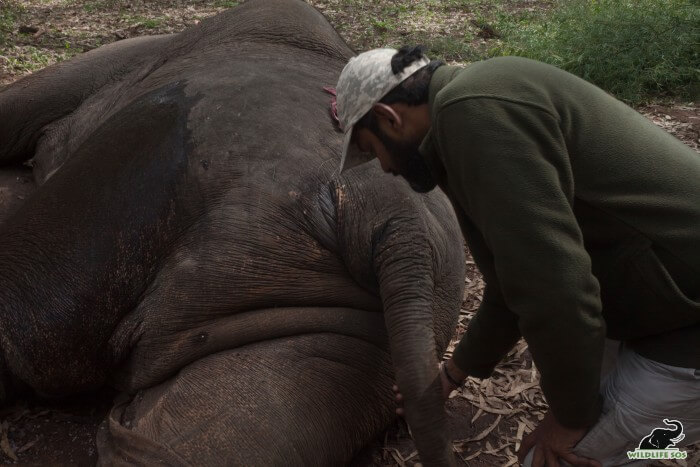
In the meantime, the injured elephant was safely translocated to Aiyyur Forest Division, away from human habitation. Dr. Arun A Sha, Director of Research and Veterinary Operations at Wildlife SOS reached the ailing elephant’s location and conducted on-site medical examination and radiography. The hind portion of the elephant’s body was incapacitated due to bone fractures and internal injuries, necessary pain management were administered to him. Unfortunately, the internal injuries were quite severe and the elephant succumbed.
Tamil Nadu is a major stakeholder state in Project Elephant and has five elephant sanctuaries covering around 8000 square kilometers of area. A study in 2017 revealed that there are 101 elephant corridors identified throughout the country, of which 28 corridors lie in South India. This shows that South India hosts a population of wild elephants, estimated at 14,606 according to the census released by the Ministry of Environment, Forests and Climate Change in 2017.
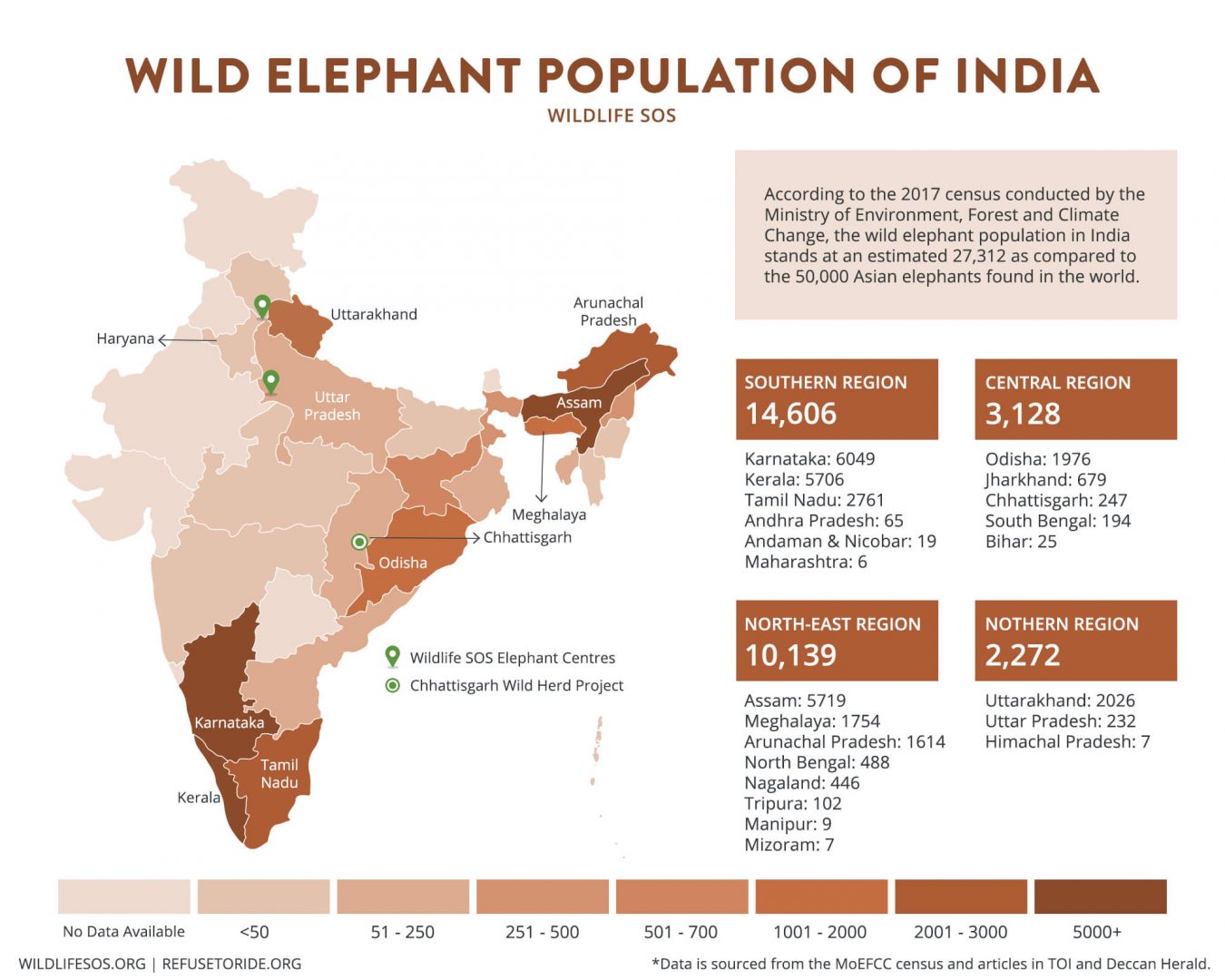
From the year 1999 to 2014, 16 elephants in Tamil Nadu were victims of tragic accidents. Of this, three were victims of train collisions and five succumbed to grievous injuries sustained in accidents due to other reasons. In the last five years, 4 elephants have been victims of road accidents which have claimed the life of an elephant calf, two tusker elephants and a female elephants. In spite of this, it is extremely unfortunate that there are reported accidents in Tamil Nadu due to overspeeding or lack of adherence to speed limits.
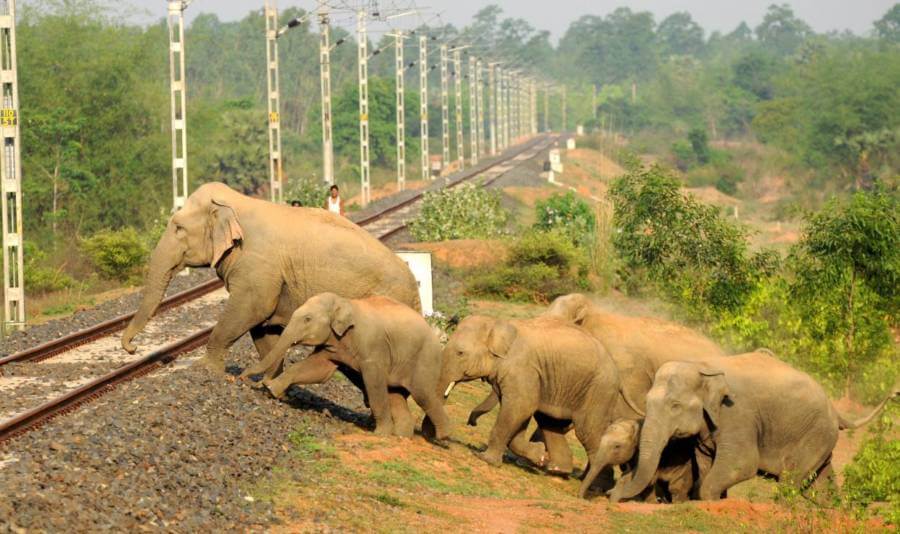
In a landmark judgment by the Supreme Court in 2018, the Tamil Nadu government was instructed to shut down the resorts in and around crucial elephant corridors in the State. There are laws like the Tamil Nadu Preservation of Private Forest Act which provide special protection to the elephant corridors in the State. According to this act, the sale of land or any development project in proximity to the elephant corridor cannot be passed without proper permission. If violations are observed, strict action will be taken against the offender which includes cancellation of the sale deed.
The Asian elephant is the largest living land mammal on the planet, and can be spotted from a distance. However, due to improperly lit highways, many drivers are unable to clearly see any wild animal in the dark. The installation of floodlights or high-powered street lights will play an important role in sighting the elephants from a distance, thus giving the time-buffer for the vehicle to slow down. Every highway that is connected to an elephant corridor should have clear signages and speed limitations that need to be strictly adhered to. Speed governors and traffic cameras will assist the Forest Department and the law enforcement authorities to identify incidents of over-speeding and levy hefty fines on the drivers.
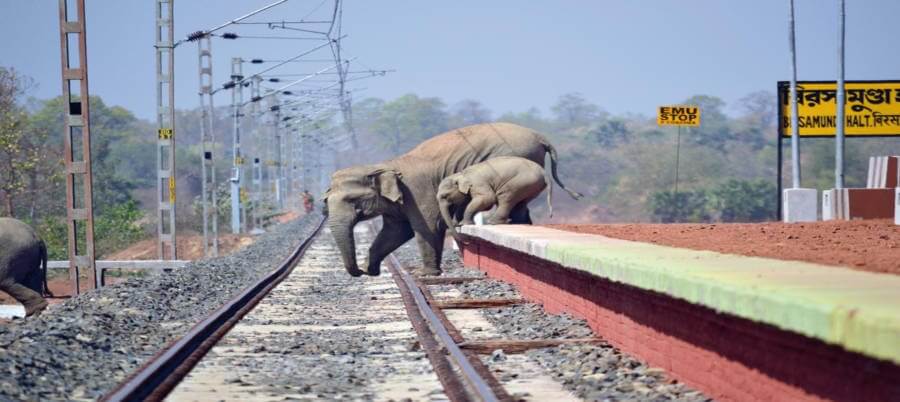
There must be regulations in the expansion of highways, being mindful of those that share borders with dense forests. There should be a 15m to 20m buffer area on either side of the highway roads to allow the elephants to be in the clear line of vision when speeding vehicles are approaching. This buffer area may also serve as a place for the elephants to halt before approaching the highway, making it easier for passing vehicles to see them.
In Singapore, a 62-metre-long ecological bridge has been constructed, connecting the Bukit Timah Nature Reserve with the Central Catchment Nature Reserve. This Eco-Bridge separates the wildlife population from the areas frequented by humans and was introduced after rapidly increasing incidents of roadkills. The Banff National Park in the USA has six wildlife overpasses and several underpasses built over the Trans-Canada Highway. The Netherlands has ‘eco-ducts’ that allow safe passage for animals across the national network of protected areas.
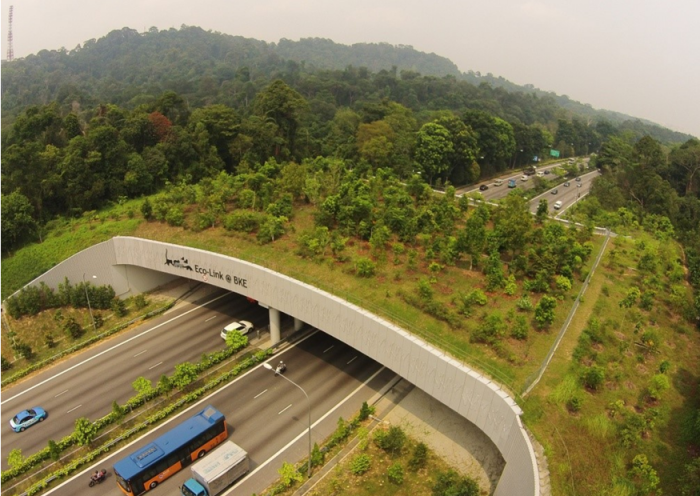
Since a large proportion of the fatalities happen at night, the best mitigation measure is thought to be the closure of roads through protected areas during night time traffic – a rule implemented on several highways in India, including those that run through Bandipur National Park and Nagarahole in Karnataka as well as Gir National Park in Gujarat. Experts have seen a drastic decline in the number of wildlife casualties, thus rallying for the night ban on highways running through national parks in various states across the country.
The death of the tusker elephant in Tamil Nadu is a wake-up call for everyone involved in the field of conservation. The sight of a lifeless body of this majestic animal is the defeat of humanity, as we know it, and poses a direct threat to the dwindling population of wild elephants in the country. Preservation and creation of wildlife corridors is the need of the hour as it demarcates the area that can be safely used by animals for movement without any human interference.

